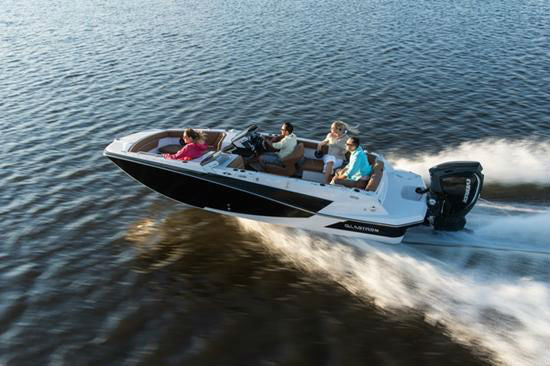
It's no secret that we love Glastron here at Hunts Marine. We recently attended their dealer's meeting in the United States to hear about some of the new models coming in the near future. But what about the past? Well, we know all about that too.
If you're going to buy a Glastron boat, there's no better way to familiarise yourself with the company then to learn about its history.
A humble beginning
It's the early 1950s. The American economy is booming, a solid middle class is emerging and the consumer culture that would continue to the present is just hitting its stride. What better purchase to make with all that new money than a boat?
Enter Bob Hammond. In 1953, he was working as production manager for an aluminium boat builder, where he was in charge of the fledgling fibreglass division. It's strange to imagine now, but in those days people were sceptical of the new material. Hammond, however, understood the benefits that fibreglass could bring to design and performance.
In 1956, he decided to take the plunge. With the funds and assistance of a crack team (Bill Gaston, a boat dealer, Robert Shoop, owner of Capitol Casket Co., and Guy Woodward, owner of a fibreglass adhesives company) Hammond began building his first prototype in a rented garage in Arlington, Texas. When it was finally done, it was tested and shown off to investors. Needless to say, they were impressed, and the crew earned the money to begin their new company.
Sales and reputations grow
The early years were defined by rapid growth. In their first, Glastron produced 24 boats, in their second 900 and in their third 4000. In percentage terms, that's a 3750 and 440 per cent jump in production, respectively.
The early years were defined by rapid growth.
Sales continued to grow year on year but that wasn't the only thing Glastron was growing - their reputation for innovation was beginning to spread. One of the main causes was the introduction of their Aqua lift v-hull, a revolutionary new design that gave an incredibly soft ride and quick-planing performance. By the end of 1953, models with the new hull accounted for over half of the company's sales.
Glastron's reputation as a cool and forward-thinking brand was further cemented as they begun to star in many a Hollywood production. In 1966 the company created a custom boat for the film "Batman". They would go on to provide boats for many different movies, perhaps most famously for the James Bond film "Live and Let Die", where Bond makes a record-breaking 120 ft jump in a Glastron GT-150.
A continuing legacy
By the time the 1970s rolled around, Glastron had become the sales leader of the industry. From a plucky little upstart in a small garage, the company had grown to operate the largest boat plant under a single roof in the world. So rapid was their production pace, that a boat was completed every four and a half minutes.
This was also the decade the company's signature design feature, the super stable vee hull, was first introduced. Created by Mel Whitley, it was hydrodynamically superior to the hulls offered on competitor's family runabouts. It features a series of strakes and wide chines that gives the boat extra lift - the result is that it's quicker to plane, faster on the top end and has more stability in turns.
The decades since have been marked by further innovations and growth. They expanded to a bigger facility in Texas, then again to Little Falls, Minnesota. They also introduced their new manufacturing technology, VEC, a closed mould system that builds boats in a more accurate and replicable way.
After reading about how they got to where they are today, we're sure you'll be itching to buy a Glastron boat as soon as possible. Get in touch with the friendly team at Hunts Marine today to learn more about our Glastron offerings.




